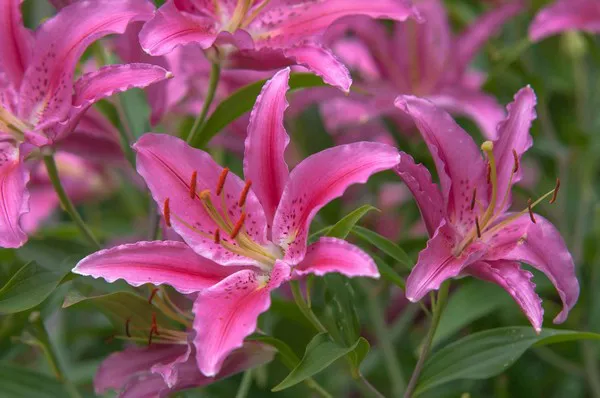In the rich tapestry of nature, flowers hold a special place, each carrying its unique symbolism and beauty. For those born in November, the connection with nature is further enriched by the birth flower associated with this month. Delving into the significance and history of November’s birth flower unveils a captivating journey through botanical lore and cultural traditions, celebrating the bloom that graces the lives of November-born individuals.
The Chrysanthemum: November’s Emblematic Flower
Flower enthusiasts and those attuned to the language of blooms recognize the Chrysanthemum as the designated birth flower for November. This vibrant and diverse genus of flowers boasts a rich cultural history and a myriad of symbolic meanings across various societies. The word “Chrysanthemum” itself is derived from the Greek words “chrysos,” meaning gold, and “anthemon,” meaning flower, emphasizing the flower’s association with golden hues and beauty.
Cultural Significance of the Chrysanthemum
In many cultures, the Chrysanthemum holds deep-rooted significance, and its prominence as November’s birth flower is no exception. In Japan, the Chrysanthemum is a symbol of the imperial family, representing longevity and rejuvenation. The country even has a National Chrysanthemum Day, known as the “Choyo-no-Sekku,” where these flowers are celebrated. This cultural reverence for the Chrysanthemum has elevated its status as a symbol of honor, loyalty, and celebration.
Flowers often transcend cultural boundaries, and the Chrysanthemum is no exception. In Chinese culture, it is revered as a symbol of autumn and a harbinger of good luck. The flower’s association with life and vitality makes it a popular choice for gifting during birthdays and other joyous occasions. Its vibrant colors and intricate petal patterns further enhance its appeal, making it a favorite not only in November but throughout the year.
Botanical Diversity of the Chrysanthemum
The Chrysanthemum genus encompasses a wide variety of species, each with its unique characteristics. From the button-like pompons to the daisy-like blooms, the diversity of Chrysanthemum flowers ensures that there’s a variant to suit every taste and occasion. This botanical richness contributes to the universal appeal of Chrysanthemums, making them versatile additions to gardens, floral arrangements, and cultural ceremonies.
November’s Birth Flower in Victorian Language of Flowers
The Victorian era saw the emergence of the “language of flowers,” where each bloom conveyed specific sentiments and emotions. In this floral lexicon, the Chrysanthemum took on nuanced meanings, often tied to the color of the bloom. While red Chrysanthemums represented love, white ones symbolized truth and loyal love. Yellow Chrysanthemums, with their association with the sun, conveyed optimism and happiness. Understanding the Victorian language of flowers adds a layer of depth to the already rich symbolism of November’s birth flower.
Cultivating Chrysanthemums: A Gardener’s Delight
For those with a green thumb, the Chrysanthemum presents an enticing opportunity to cultivate a garden brimming with November’s birth flower. These hardy perennials are relatively easy to grow, offering a burst of color late into the fall season when many other flowers have faded. With proper care and attention to soil conditions and sunlight, gardeners can enjoy the beauty of Chrysanthemums while celebrating their November-born friends and loved ones.
The Charming Varieties of Chrysanthemums
The world of Chrysanthemums is vast, featuring numerous varieties that cater to different aesthetic preferences. From the classic and regal “Spider Chrysanthemum” to the intricate and dainty “Spoon Chrysanthemum,” each variant adds a unique flair to gardens and floral arrangements. Exploring these different varieties not only enhances the visual appeal of the flower but also provides enthusiasts with an opportunity to appreciate the breadth of nature’s artistic expression.
Chrysanthemums in Art and Literature
Beyond gardens and bouquets, Chrysanthemums have inspired artists and writers throughout history. In art, these flowers have been depicted in various forms, from delicate watercolors to bold and vibrant paintings. The inherent symbolism and aesthetic appeal of Chrysanthemums make them a recurring motif in literature, where they are often used to convey themes of beauty, transience, and the cycles of life.
Celebrating Birthdays with Chrysanthemums
As November heralds the arrival of autumn and the transition from the vibrancy of summer to the serenity of winter, Chrysanthemums take center stage in birthday celebrations. Whether gifted as a bouquet, arranged as a centerpiece, or even adorning a birthday cake, these flowers bring a touch of elegance and warmth to November birthdays. The diverse color palette of Chrysanthemums allows for personalized and thoughtful birthday gestures, with each hue carrying its own distinct message.
Chrysanthemum Festivals Around the World
The global appreciation for Chrysanthemums is evident in the various festivals dedicated to these flowers. Beyond Japan’s National Chrysanthemum Day, other countries also host events celebrating the beauty and cultural significance of these blooms. These festivals often feature stunning displays of Chrysanthemum arrangements, competitions, and educational programs, fostering a sense of community among flower enthusiasts and reinforcing the universal appeal of November’s birth flower.
Preserving the Legacy: Drying and Pressing Chrysanthemums
For those looking to extend the lifespan of their Chrysanthemum blooms, preserving them through drying or pressing is a charming option. Dried Chrysanthemums can be used in various crafts, including potpourri and wreaths, adding a touch of autumnal elegance to home decor. Pressed Chrysanthemums, on the other hand, can be framed or incorporated into personalized greeting cards, allowing individuals to cherish the beauty of their birth flower throughout the year.
Conclusion
November’s birth flower, the Chrysanthemum, weaves together a tapestry of cultural, botanical, and artistic significance. From its roots in ancient symbolism to its contemporary appeal as a versatile garden favorite, the Chrysanthemum stands as a timeless emblem of beauty and celebration. As individuals born in November embrace another year of life, the bloom of the Chrysanthemum serves as a poignant reminder of the interconnectedness between nature and our personal journeys. In every petal and every hue, November’s birth flower encapsulates the essence of the season and the profound beauty found in the cyclical nature of life.


